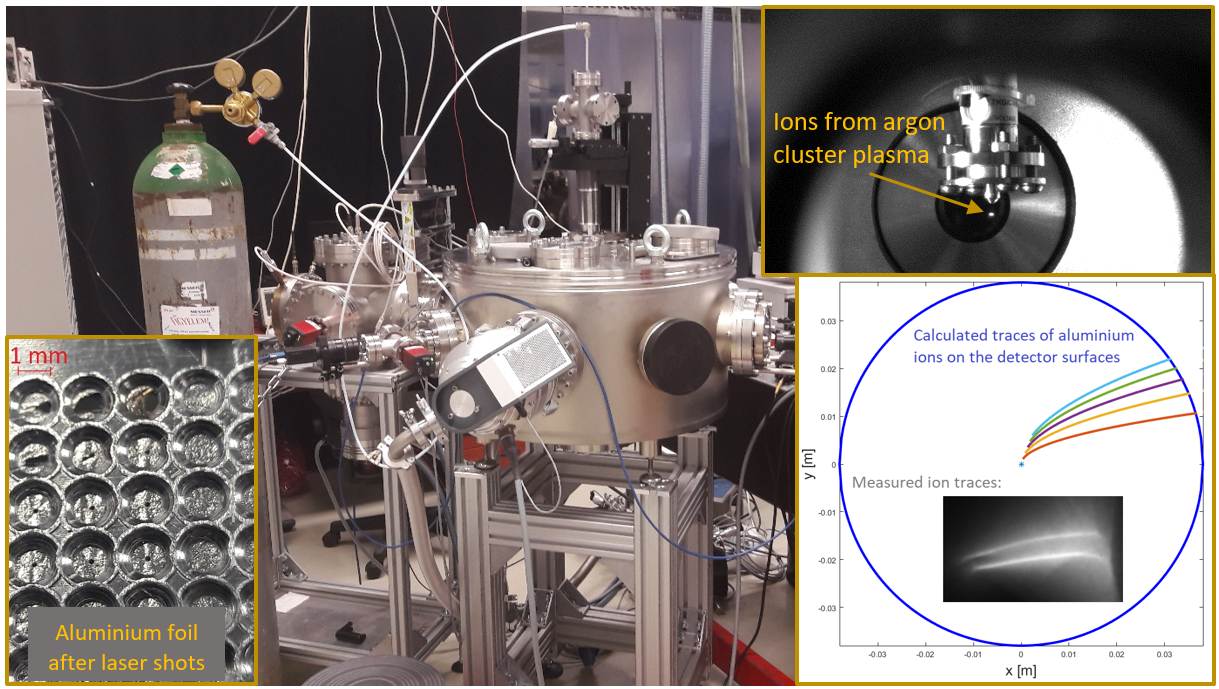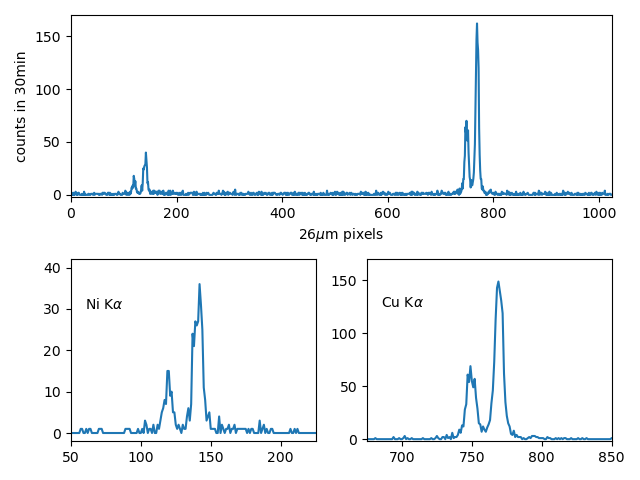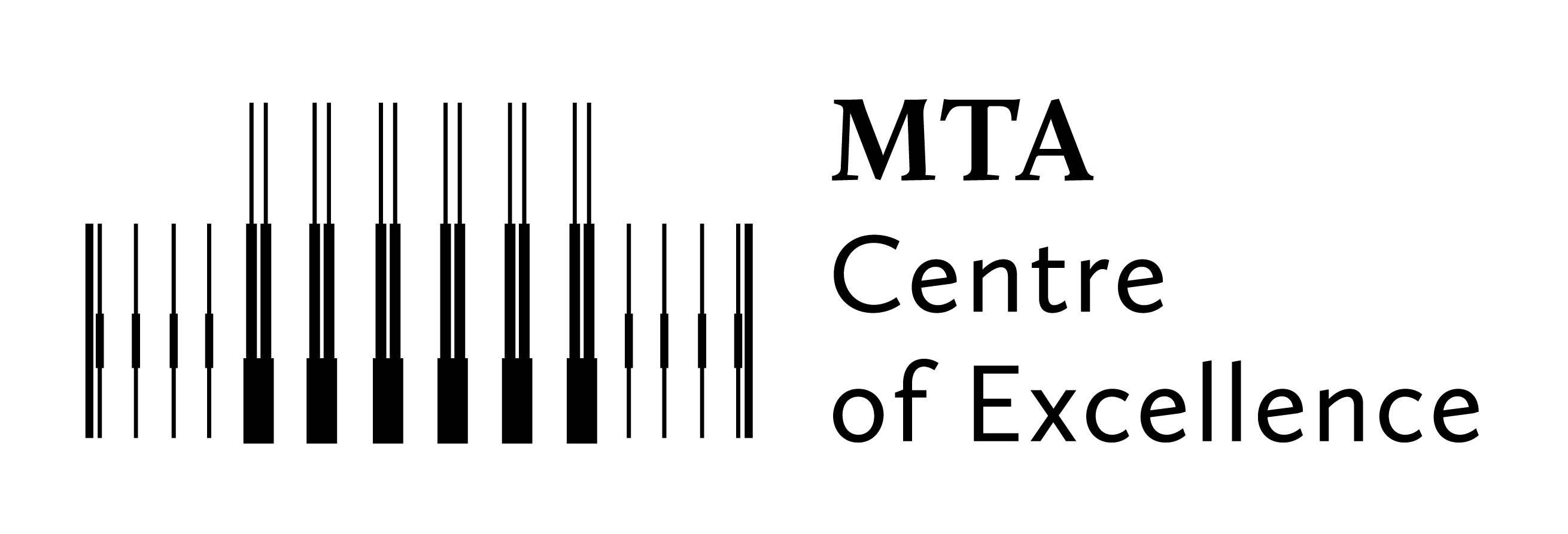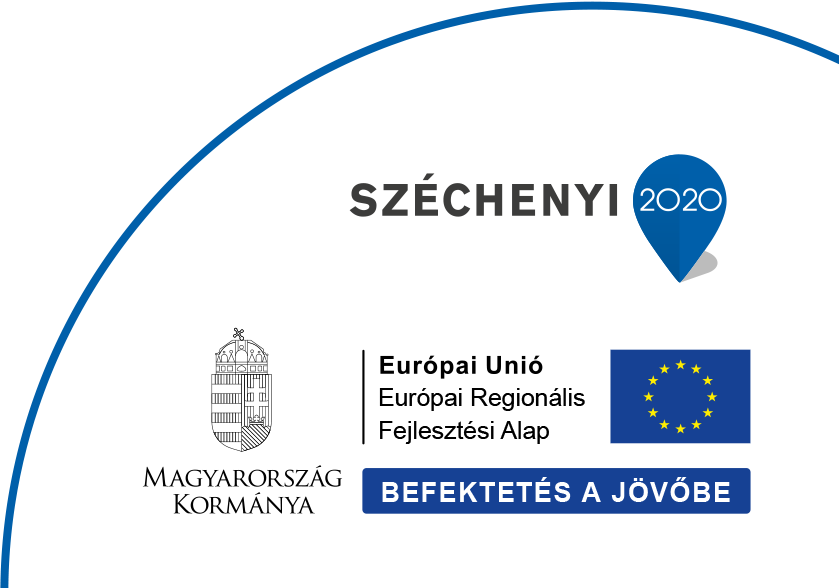2021
Laser-driven ion accelerator. — Ion and electron acceleration using ultrashort high intensity laser pulses is currently being widely investigated, but laser-plasma interactions as sources of high energy negative ion and neutral atom beams have not been investigated thoroughly yet. The laser acceleration of positive ions is possible through a number of processes (e.g. in the so-called Target-Normal-Sheath-Acceleration mechanism). The charge of a positively charged projectile can be reduced by capturing bound or free electrons, the strong neutralization can even generate negative ions if atoms have positive electron affinity. By irradiating clusters of CO2, the interaction can form stable C and O negative ions. Our research work for developing of a laser-driven ion and atom accelerator in the frame of an NKP project. We would like to develop compact foil and gas cluster targets and a portable Thomson parabola spectrometer for the generation and characterization of ion and atom beams which can be applicable up to relativistic-intensity laser-plasma interactions. In the detection system the ions are deflected in static magnetic- and variable electric fields. The laser beam is focused into the target by a parabolic mirror. The arrangement can be seen in the Figure 1.

Figure 1. Compact laser-driven ion- and atom accelerator setup.
In 2021 we developed a high pressure gas injection system, with which Van-der-Waals-bonded clusters can be generated with a wide range of diameters. Cluster size was monitored by Rayleigh scattering of laser light. New sample holders for solid targets were designed and fabricated, which allow effective and economic usage of expensive foils. Ion generation was investigated from aluminum foil and argon clusters. For ions with different energies it is necessary to use different magnetic field strengths in a wide range, therefore we measured the magnetic field in case of several setups with yoke geometry. Calibration and testing of the Thomson parabola spectrometer was carried out with several targets which required the shielding of the detectors to avoid stray light.
AWAKE: Laser pulse propagation in rubidium vapor and plasma channel diagnostics. — As a member of the AWAKE Collaboration at CERN, aiming to build a novel plasma wakefield particle accelerator for electrons, we investigate the creation of a long plasma channel using ultra-short, terawatt laser pulses. At the AWAKE location in CERN we conducted laser pulse propagation experiments in a wide range of parameters (vapor density, pulse energy), measuring the transverse energy distribution and spectrum of the transmitted laser pulse. We investigated the difference between the propagation of a 780 nm wavelength ‘resonant’ pulse and that of an 810 nm wavelength ‘non-resonant’ pulse. Theory predicts the propagation properties of resonant and non-resonant pulses to be very different [1] and these experiments were aimed at probing these differences as the resulting plasma channel is also predicted to be quite different. We thus also measured the ionization of the rubidium vapor using a Schlieren imaging setup, in an attempt to quantify the width of the plasma channel. Processing of the experimental data has begun and its comparison with the most recent simulation results is expected to soon follow. We also took part in the experimental program of the collaboration by helping operate the laser system and plasma generation during the measurements of proton beam modulation and electron acceleration.
Relativistic electrons by THz radiation. — In previous experiments of the group with the University of Szeged [2] half cycle THz radiation was efficiently generated by Large Aperture Photoconductive Antennas (LAPCA). A new setup is proposed together with the University of Pécs which combines their Optical Rectification method in lithium-niobate with the LAPCA method. THz radiation from LAPCAs may result in bunching of the electrons, thus shaping the electron beam.
The conical con Hamos spectrometer. — The conical von Hamos spectrometer designed by our group was built together and tested. The tests were carried out together with the Femtosecond Spectroscopy and X-ray Spectroscopy Research Group. In the tests, radiation from a CW X-ray tube was focused on samples, and the fluorescent signal was investigated. Our spectrometer was compared with simple semiconductor detectors and also with a high-resolution, cylindrical von Hamos spectrometer. The measured spectrum proves that the arrangement now allows the simultaneous observation of Cu and Ni K-α radiation at 7.4 and 8.0 keV with a single CCD detector. The compression of the spectrum in size does not mean serious loss of the resolution, as the K-α doublets can be clearly distinguished in both cases. The spectral resolution in this range was better than 5 eV, in good agreement with ray tracing calculations. Thus, we started with designing experiments on high power laser facilities (ABC laser in Frascati and HILL KrF laser in Szeged) to investigate hot electron temperature using this spectrometer.

Figure 2. Fluorescent spectrum of the Cu and Ni K-shell spectrum. The lower curves show the Cu and Ni radiation in more detail
EuPRAXIA. — The goal of the EuPRAXIA Project is to develop and build a novel particle accelerator for civil applications. At the beginning of the year 2021, the EuPRAXIA Conceptual Design Report was published and became available online [3]. During the year, the final structure of international consortium has been formed. The Wigner Research Centre for Physics will join the project in a close collaboration with the University of Pécs and University of Szeged, as a full member of the consortium. The goal of the 2nd phase is to elaborate the Construction Design Report between October 2022 and September 2026.
The development, construction and running such an accelerator, and planning tailor-made accelerators in the future requires highly qualified personnel. Therefore, the EuPRAXIA Project applied for stipends via the Marie Skłodowska-Curie Actions. The Wigner Research Centre, in a close collaboration with the University of Pécs, also applied to host a Ph.D. student and give her/him a qualification such that she/he will be eligible to attend this innovative project.
References:
[1] G. Demeter, J. T. Moody, M. Á. Kedves, B. Ráczkevi, Aladi et al., Phys. Rev. A 104, 033506 (2021)
[2] X. Ropagnol, Zs. Kovács, B. Gilicze, M. Zhuldybina, F. Blanchard, C.M. Garcia-Rosas,
S. Szatmári, I. B. Foldes, T.Ozaki;. New Journal of Physics 21, 113042 (2019)
[3] Eur. Phys. J. Special Topics 229, 3675-4284 (2020). DOI: 10.1140/epjst/e2020-000127-8
International collaborations: EUROFUSION, AWAKE, EuPRAXIA
Selected journal papers:
1. G. Demeter, J. T. Moody, M. Á. Kedves, B. Ráczkevi, Aladi, A.-M. Bachmann, F. Batsch, F. Braunmüller, G. P. Djotyan, V. Fedosseev, F. Friebel, S. Gessner, E. Granados, E. Guran, M. Hüther, V. Lee, M. Martyanov, P. Muggli, E. Öz, H. Panuganti, L. Verra, and G. Zevi Della Porta: Long-range propagation of ultrafast ionizing laser pulses in a resonant nonlinear medium, Phys. Rev. A 104, 033506 (2021)
2. F. Batsch, … G. Demeter, ... AWAKE Collaboration: Transition between Instability and Seeded Self-Modulation of a Relativistic Particle Bunch in Plasma, Phys. Rev. Lett. 126, 164802 (2021)
3. I.F. Barna and L. Mátyás: "Analytic solutions of a two-fluid hydrodynamic model", Mathematical Modeling and Analysis 26, (2021) 582, https://doi.org/10.3846/mma.2021.13637
4. Földes I.B., Tikhonchuk V.T.:Comment to the paper I. Papp et al.: Laser wake field collider [Phys. Lett. A 396 (2021) 127245]; PHYSICS LETTERS A 424 Paper: 127845 2 p. (2022)



